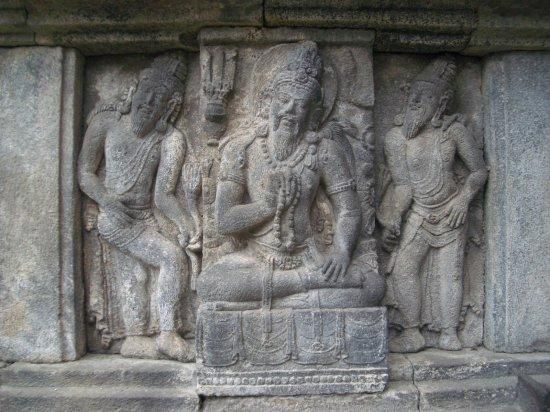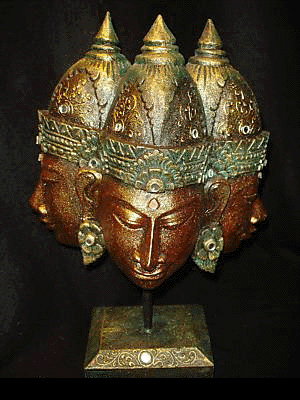
|
|
|
|
Today Bali's Hindu community still accepts the Trimurti -- Visnu, Brahma and Shiva – but there is little deity worship found at this time. Both Vaisnavism and Saivism have given way to a Tantric form of worship, dovetailed into the original Vedic practices. Worship of the Sun has taken the place of deities and even salagram worship. Surya is invoked into Kumbha and Kalasha. Centuries ago, Lord Brahma was recognized here as one of the divine personalities, along with Shiva and Skanda. The Shiva and Somaskanda manifestation no doubt eclipsed Brahmadeva here, as it did in India. But today, demigod worship has essentially taken over, and there are images of the Devatas found everywhere. In the 15th century, after the Islamic marauders took over, the Saiva saint Dvijendra installed the Padmasana Column in Balinese temples. Known as the Lotus Throne of Surya, its worship was akin to the worship of Sudarshan in Jagannatha Puri.
Much of Indonesia eventually took up a form of Trimurti worship, in the manifested form of Parabrahman, but modeled after the Puri cult of Jagannath, Balabhadra, and Subhadra. In the Indonesia context, Lord Jagannath represented Vishnu, Balabhadra was Siva, and Subhadra was Brahma. Brahma's role as Subhadra was described by the poet Sri Yasobanta das, in his Premabhakti Brahma Gita. He stated that when Lord Brahma was engaged in the acts of creation, Mother Bhumi, as Yogamaya Shakti, wished to join with him. Brahmadeva, seeing Bhumi Devi as his mother, could not agree to such a relationship. The goddess became very angry, and again Lord Brahma was cursed, this time being made to descend in the universe in the form of a woman.
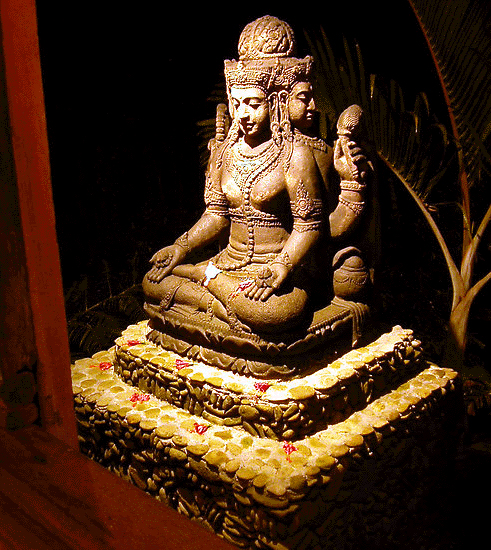
Lord Brahma Public deity, Bali Lord Visnu, witnessing their disagreement, appeared and vowed that in Kali Yuga, when he would appear in the form of Jagannath, Brahma would be by his side in the form of Subhadra. This inconceivable pastime is the reason Subhadra Devi is sometimes worshipped as Brahma on the Ratnavedi of the Puri Jagannatha Temple. Somewhere in Puri, we are told, there is a shrine to Brahma. In Indonesia, as in India, the Buddhists eventually co-opted the Jagannatha triad as well, replacing Lord Brahma with the Buddha, sometimes replacing Lord Jagannatha Himself, and other times worshipping a Jagannath-Buddha-Mahavairochana triad. This syncretic form of Buddha taking the place of the Trimurti deities also manifested in Central Java, growing in the early period of the East Javanese empire of Ishanavansa as Tutur Sang Hyang Kamahayanikan, a classic Javanese Buddhist form of worship. The great temple of Parambrahman (Prambanan) in Central Java also took up this transformed version of the original Trimurti of Visnu, Brahma and Shiva.
The temple of Parambrahman in Central Java is a massive complex, enclosed in a fortified wall. Inside the wall there is a terraced area consisting of four rows, with 40, 48, 56, and 64 temples, respectively. There are sixteen temples located at the corners of the rows, facing two directions. Another walled area surrounds sixteen additional shrines.
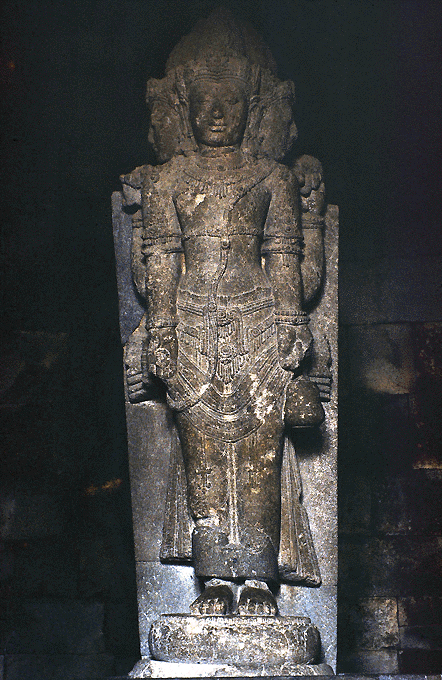
Lord Brahma deity Prambanan Temple, Java The three largest temples at Parambrahman are home to large stone deities of Trinatha (Trimurti) Visnu in the north (as Narayana), Brahmadeva in the south, and Shiva in the center. The inside walls facing the three shrines are sculpted in bas-relief panels depicting episodes from Krishna-lila, in the Vishnu temple, and scenes from Ramayana in the Shiva and Brahma temples. It's interesting to note that yesterday, we saw another example of Brahma's association with the Ramayana, in the Valmiki panel at Banteay Chhmar, Cambodia. There is a Nandi platform facing the main temple, along with shrines for Brahma's Hamsa-vahana, and Sri Garuda-vahana. Unfortunately, many of the temple structures at Parambrahman were damaged in the 2006 earthquake. The fallen stones are now painstakingly being returned to their proper place, piece by piece.
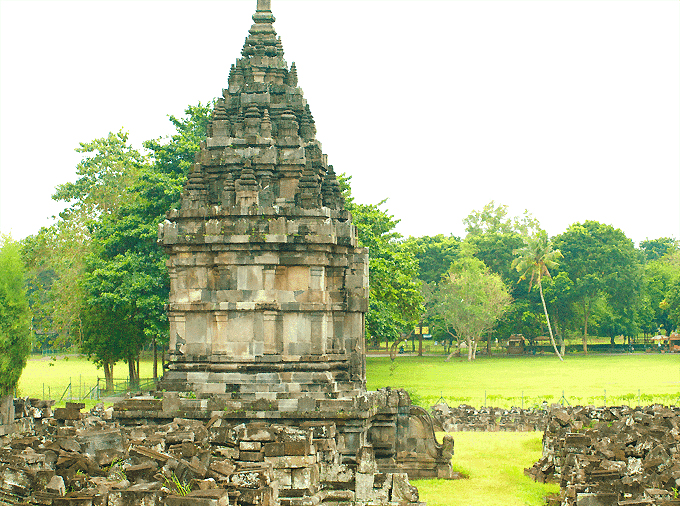
Prambanan temple, earthquake damage There were many centers of Vaisnava and Saivite worship in Java, particularly in West and Central Java. At one point Java and Bali were under the rule of a single family empire, the Srivijaya rulers, or the Varmadevas in Bali. Mahayana-Vajrayana Buddhism was introduced into Bali during this period, although they had previously been practicing the same Vedic religion as people in Central Java. Being Vedic in philosophy but Agamic or Tantric in practice, the Trinatha worship conducted here still held the mark of influence from the Jagannatha cult. West Java at one point was under the rule of Purnavarman, who was apparently a devotee of Visnu. His kingdom was known as Tarumanagara, 'Taruma' being another name for Tulasi. As Buddhism's prominence grew in Sumatra, the Vaisnava influence slowly diminished in Java. Buddhism itself eventually morphed, and became tinged with Tantric practices. There was a great convergence of South Indian influences from the Pallava and Chola, along with Vaishnavism, Saivism, and Buddhism, all of which eventually settled into the Nusantara traditions of this area.
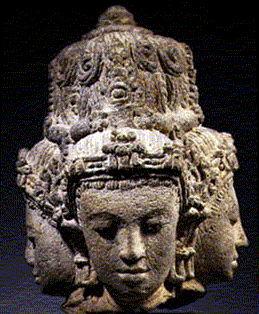
Early 10th c. Java Trimurti As we see from these Javanese images of Lord Brahma, the Indian style was still present in the deity forms, having not been eclipsed by Buddhist or other Indonesian iconography. Catur-mukha Brahma in Java, however, followed much the same path of transformation as in Bali. Given the deep roots of Vaisnavism in Bali, particularly, we can hope that one day Lord Brahma will be returned to a place of prominence with his Trimurti associaties, not only in Indonesia, but everywhere on the planet where his worship has been minimized or lost. Hopefully this small effort, our Sun series on Lord Brahma's worship, will contribute some impetus in that direction. Hare Krsna. All glories to Lord Brahma, the founding father of our esteemed Brahma Madhva Gaudiya Vaisnava Sampradaya.

Lord Brahma, Central Java
| |
